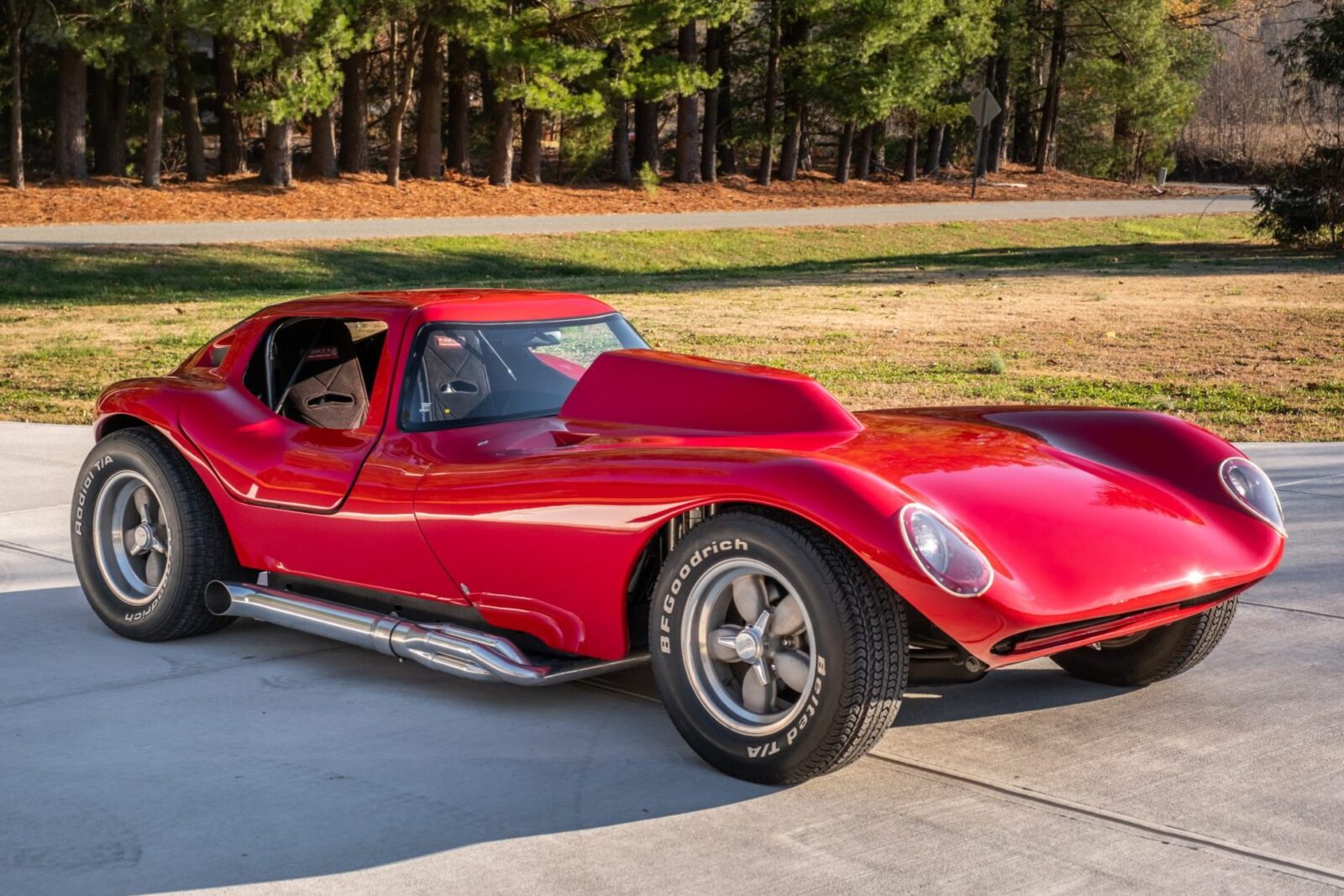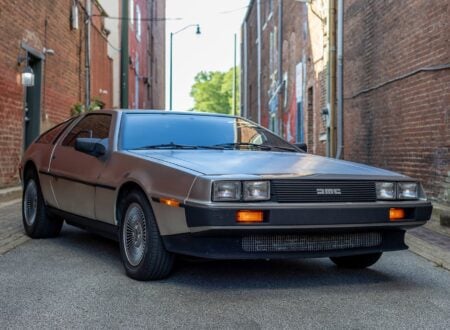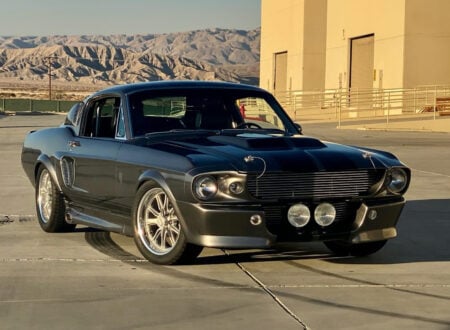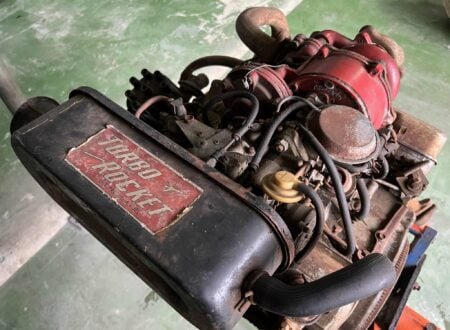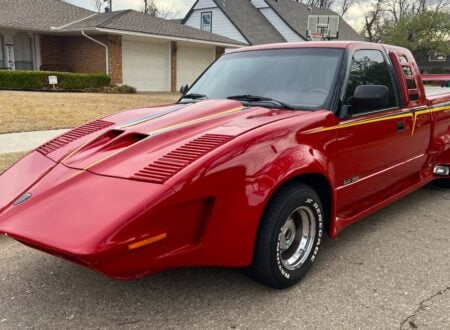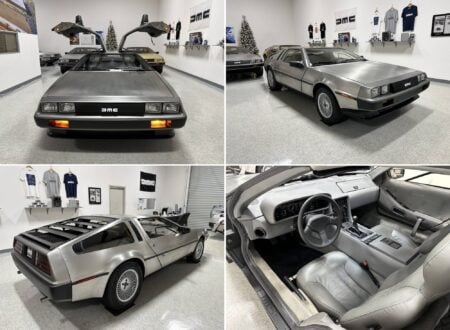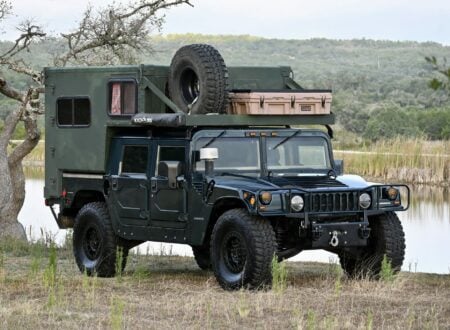This unusual looking vehicle is an amalgam of sorts, a crossbreed between the legendary Bill Thomas Cheetah and a 1963 Chevrolet Corvette – and it’s powered by a fire-breathing 454 cubic inch big block V8.
The original Cheetahs were developed by Bill Thomas and Don Edmunds back in the early 1960s to compete with the all-conquering Shelby Cobra and despite the low-budget the Cheetah performed well, winning a number of races and establishing itself as a serious competitor.
Fast Facts – A Cheetah Clone x Corvette Crossbreed
- The Bill Thomas Cheetah was conceived as a competitor to the Shelby Cobra. Bill Thomas, an accomplished race car builder and tuner who had previously worked with Chevrolet, embarked on creating a car with Don Edmunds, his lead fabricator, that could outperform the Cobra on track.
- The design of the Cheetah was characterized by its aerodynamic, elongated front and compact, lightweight structure with a bobtail rear end – it’s proportions look unusual, but they proved highly effective at centralizing mass and giving near 50/50 weight distribution.
- The Cheetah enjoyed success soon after entering limited production, winning a slew of races against far better supported vehicles. It’s not known exactly how many were made, the real number is likely somewhere between 23 and 33.
- Both official and unofficial Cheetah continuation cars have been produced in the decades since the car left production. The example shown in this article has a fiberglass body made by Elegant Motors of Indianapolis, Indiana. It’s fitted to a 1963 Chevrolet Corvette chassis, and powered by a prodigious 454 big block V8 ending power back through a Richmond 5-speed manual transmission.
David vs Goliath
The Bill Thomas Cheetah is one of the most endearing automotive David vs Goliath stories of the 1960s. The Cheetah’s chassis was sketched out in chalk on a concrete garage floor by lead fabricator Don Edmunds around the engine, transmission, and other key components. Once this was done he pencilled a simple body design on a piece of paper, and the project to build the car commenced.
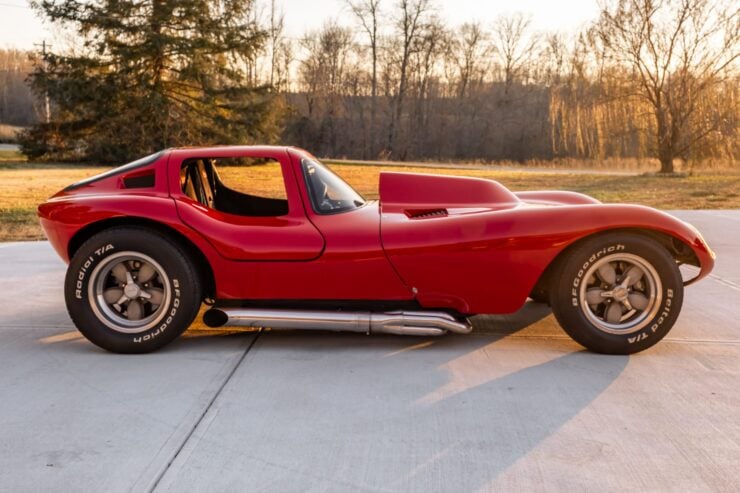

The incredibly simple design and engineering process behind the Cheetah stood in stark contrast with the vehicles it would be racing against – highly polished sports racing cars from the likes of Ferrari, Jaguar, Aston Martin, and it’s key rival – the Shelby Cobra.
The Talented Mr Thomas
Bill Thomas had begun modifying Chevrolet Corvettes for motorsport for C.S. Mead Motors Co. in 1956 and quickly made a name for himself due to the success of the vehicles he’d tuned. In 1960 he set out on his own, founding Bill Thomas Race Cars and taking on private clients.
Soon after this Thomas was approached by General Motors who contracted him to work on performance versions of the then-new Chevrolet Corvair. This was a tougher assignment than it may have seemed at first, as the Corvair was powered by a rear-mounted, flat-six, air-cooled engine – something that few American performance tuners had any experience with.
Thomas enjoyed success with the Corvair and went on to develop high-performance versions of the 409 cubic inch V8 Bel-Air and Biscayne for drag racing. He famously built a Chevrolet stock car for racing driver Louis Unser, who won his division at the Pikes Peak International Hill Climb with it.
The Creation Of The Bill Thomas Cheetah
It would be in 1963 that Bill Thomas secured support for a new project, albeit off the books, from Vince Piggins – the head honcho over at the General Motors Performance Product Group. This new project would be called the “Cheetah” and it would be a concept vehicle developed from scratch using GM parts where possible.
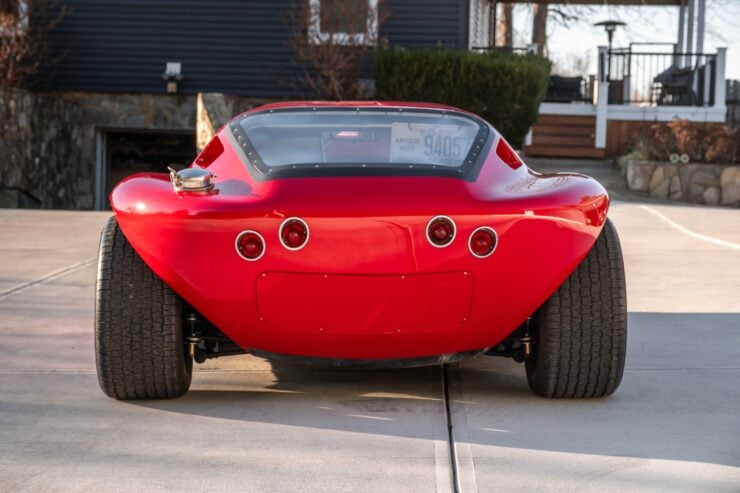

Bill Thomas and his lead fabricator Don Edmunds discussed the new car, including how it should perform and how it should be designed, then Edmunds cleared a section of the workshop and began laying out the drivetrain on the concrete floor.
He used white chalk to draw a chassis around the drivetrain, then filled in wheels, seats, pedal boxes, and other key elements of the car. Once this was done he sketched out a simple design on some paper and showed it to Thomas, the men made some alterations, and based on a new sketch the design of the body of the car was settled.
Edmunds fabricated the chassis added the drivetrain, suspension, brakes, wheels, and tires, once he had a full rolling chassis he set to work on a wooden body buck. The plan was to make the body from sheet aluminum, once the buck was done it was sent off to California Metal Shaping, and they created all of the panels. The glass was then made by the Aircraft Windshield Co.
Two initial prototypes were built, the second of which was sent off to the Chevrolet Engineering Center for testing. After these two cars were made the decision was made to produce all of the future bodies from fiberglass as it was easier than having each panel hand-shaped from aluminum.
Over the course of the 1963 to 1966 production run a number of Cheetahs were built, due to the seat-of-the-pants nature of the operation and the lack of record keeping an exact number may never be known, but most agree it was approximately 23, with at least 19 chassis made, and possibly as many as 33 bodies.
The most successful racing Cheetah was the one owned by Ralph Salyer. His mechanic Gene Crowe had cut the roof off and turned it into a roadster to reduce the significant heat buildup in the cockpit, and it must have worked, as Salyer would win 11 races with the car between 1964 and 1965.
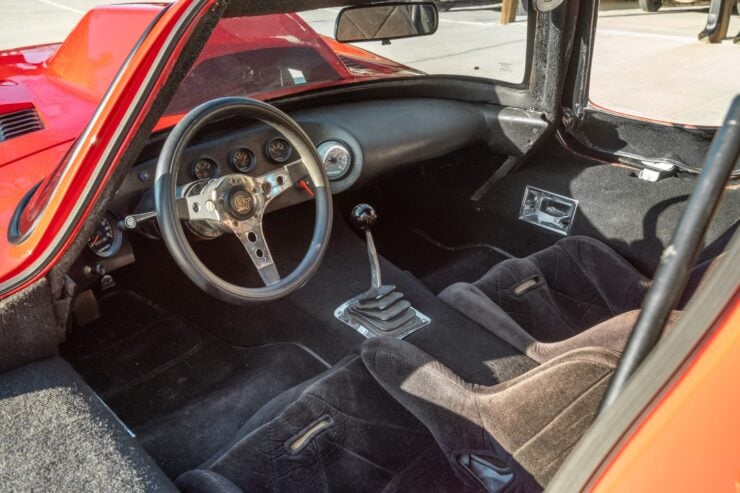

Today the surviving original Bill Thomas Cheetahs are highly collectible and sell for figures well into the six figures.
The Cheetah Clone x Corvette Crossbreed Shown Here
The car you see here is a crossbreed of sorts, as noted in the introduction it’s a combination of a 1963 Corvette chassis, a Bill Thomas Cheetah body clone, and a 454 cubic inch big block V8 under the hood.
As the car is built on a C2 Corvette chassis it inherits the car’s independent four wheel suspension and four wheel disc brakes, both relatively advanced features for a sports car from this era. Due to the much lower weight of the Cheetah fiberglass body versus the production fiberglas body of the Corvette, the car is also lighter.
That 454 V8 has been fitted with a Holley double-pumper carburetor, it has an Edelbrock Performer intake manifold, chrome valve covers, a front-mounted oil cooler, Doug Thorley exhaust headers, and more a modern electric radiator fan.
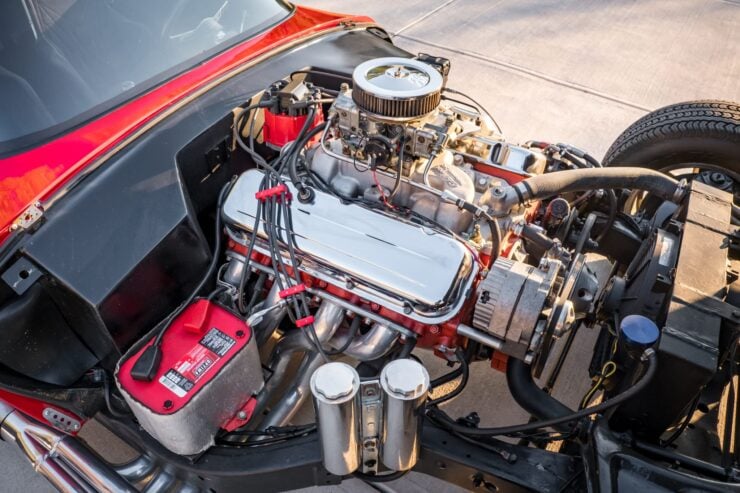

Power is sent back through a Richmond 5-speed manual gearbox, and the exhausts exit out each side of the vehicle just in front of the rear wheels. The Cheetah design had the driver and passenger positioned well back, almost sitting on the rear axle line – this was to bring the engine and transmission back for better front/back weight distribution.
This unusual Cheetah clone / Corvette crossbreed is now being offered for sale out of Timberlake, North Carolina with a North Carolina Specially Constructed title that lists the car as 1963 Chevrolet Replica. If you’d like to read more about it or register to bid you can visit the listing here.
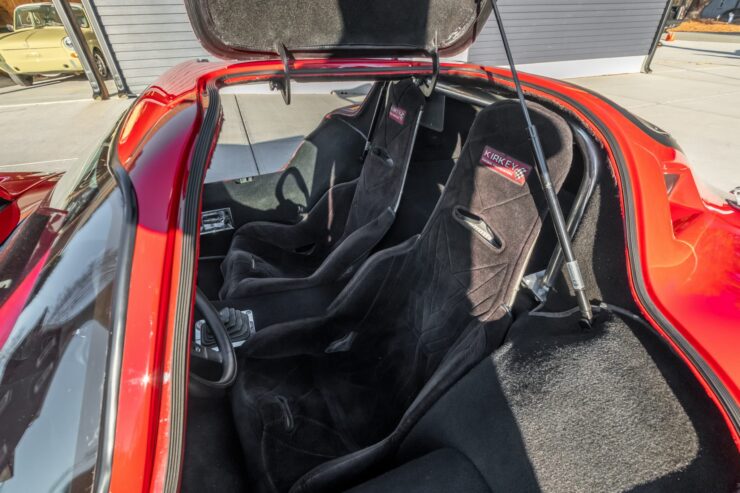
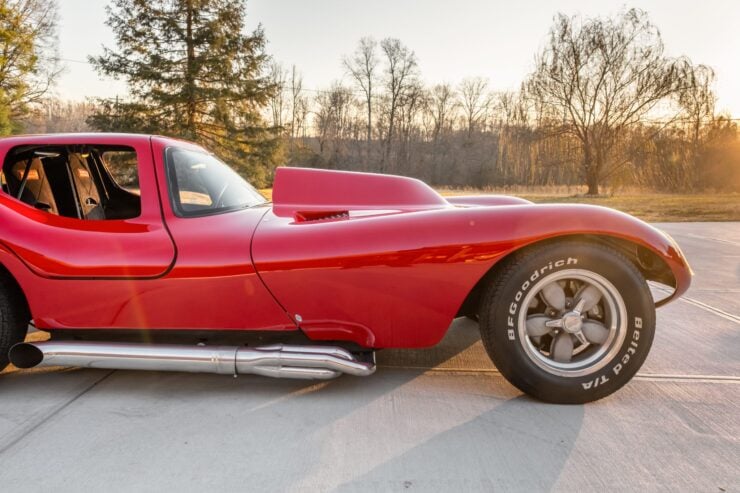
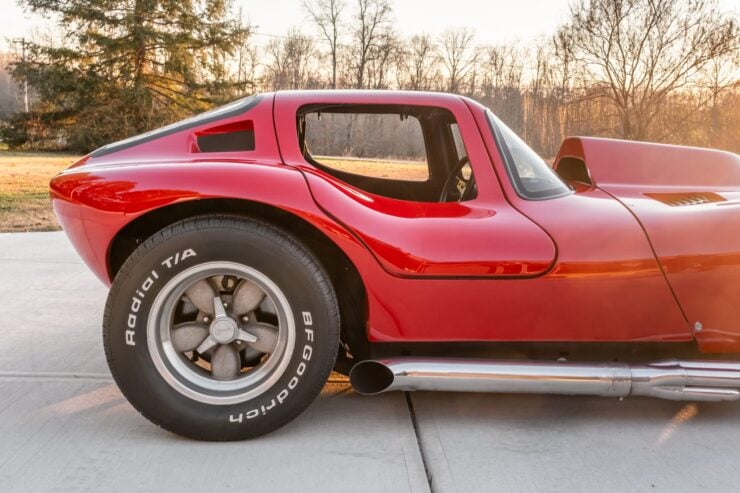
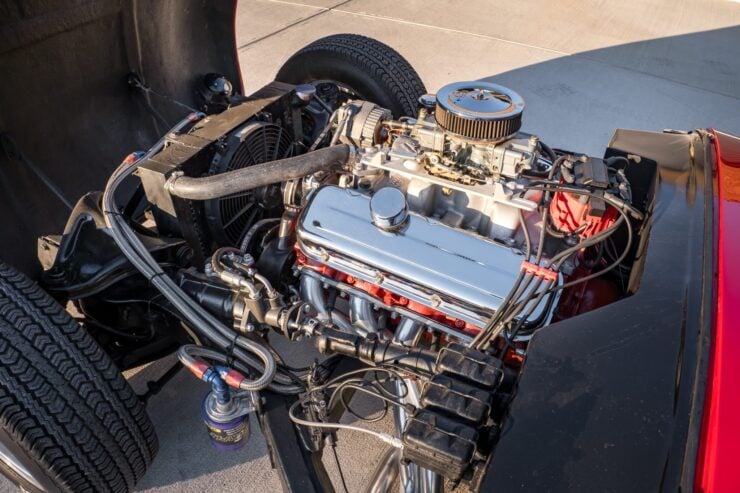
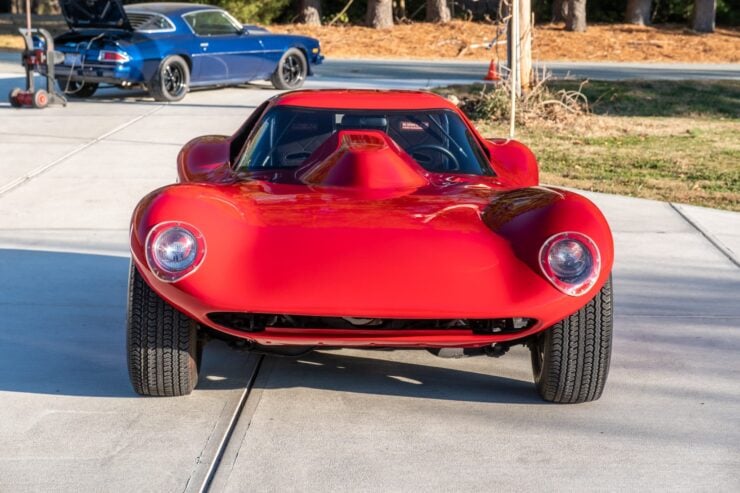
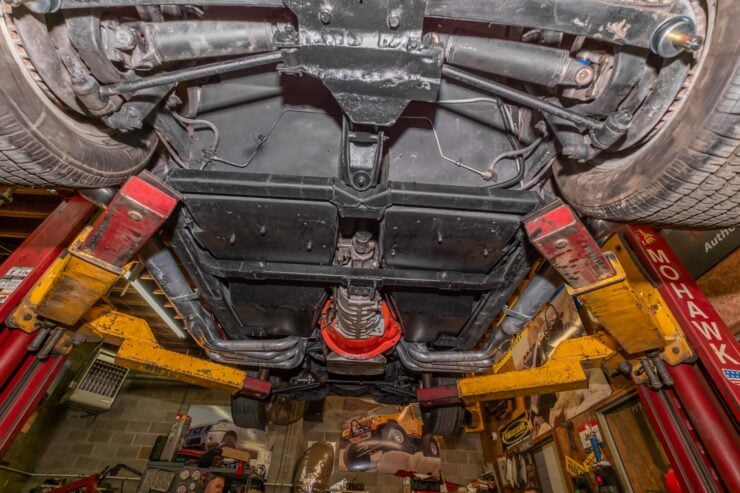
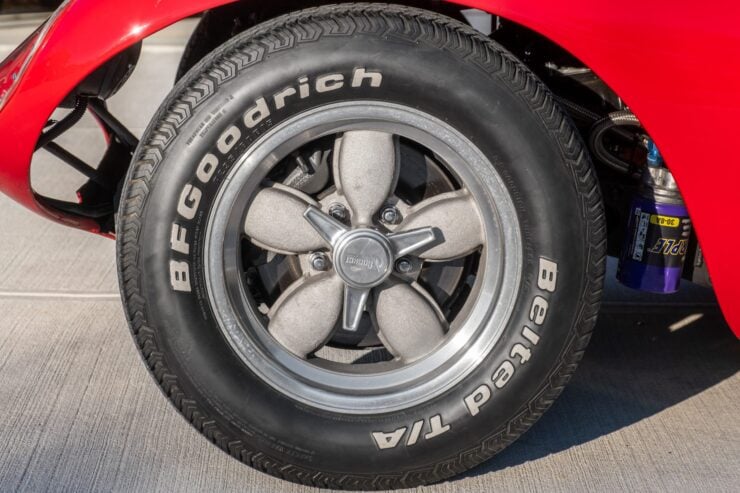
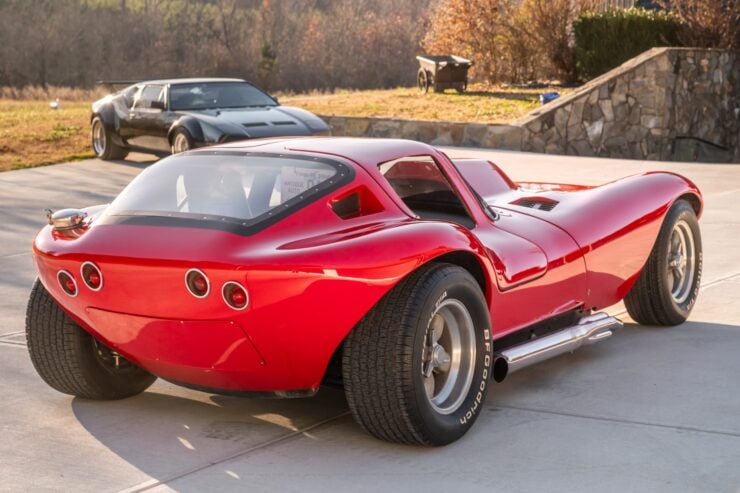
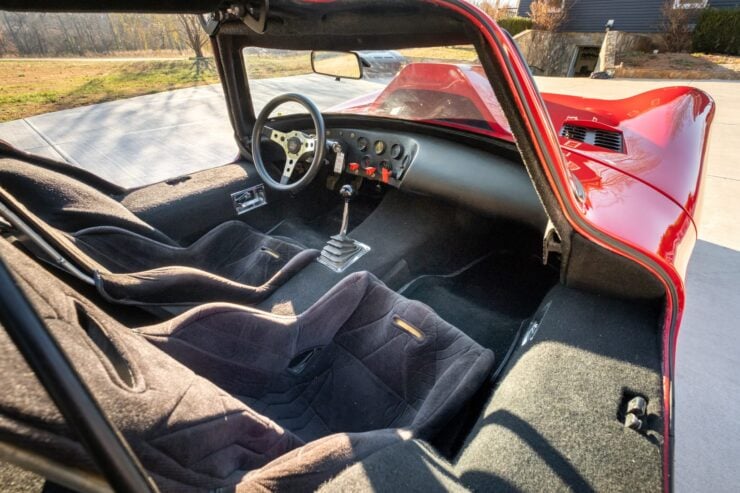
Images courtesy of Bring a Trailer

Articles that Ben has written have been covered on CNN, Popular Mechanics, Smithsonian Magazine, Road & Track Magazine, the official Pinterest blog, the official eBay Motors blog, BuzzFeed, Autoweek Magazine, Wired Magazine, Autoblog, Gear Patrol, Jalopnik, The Verge, and many more.
Silodrome was founded by Ben back in 2010, in the years since the site has grown to become a world leader in the alternative and vintage motoring sector, with well over a million monthly readers from around the world and many hundreds of thousands of followers on social media.

